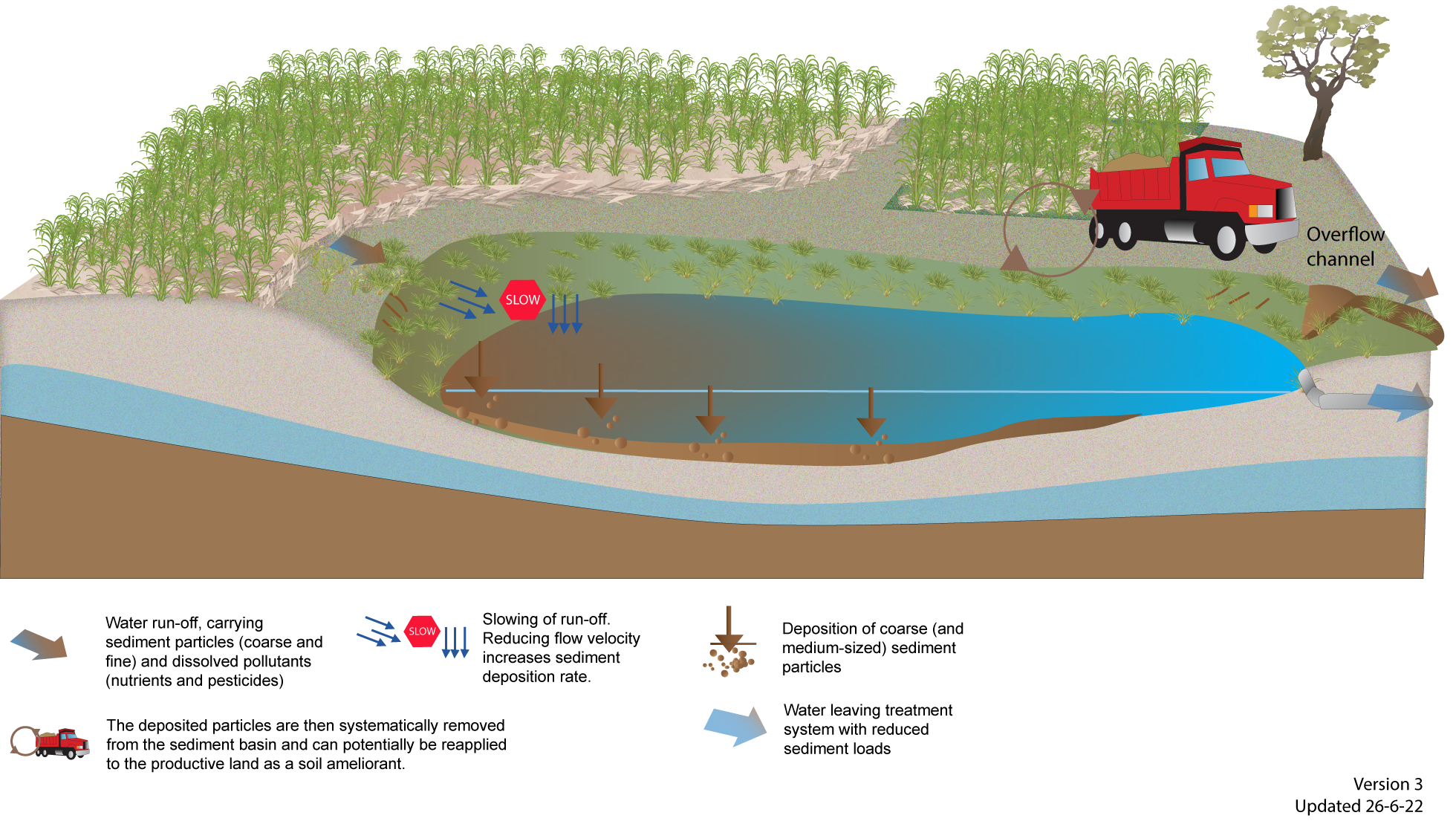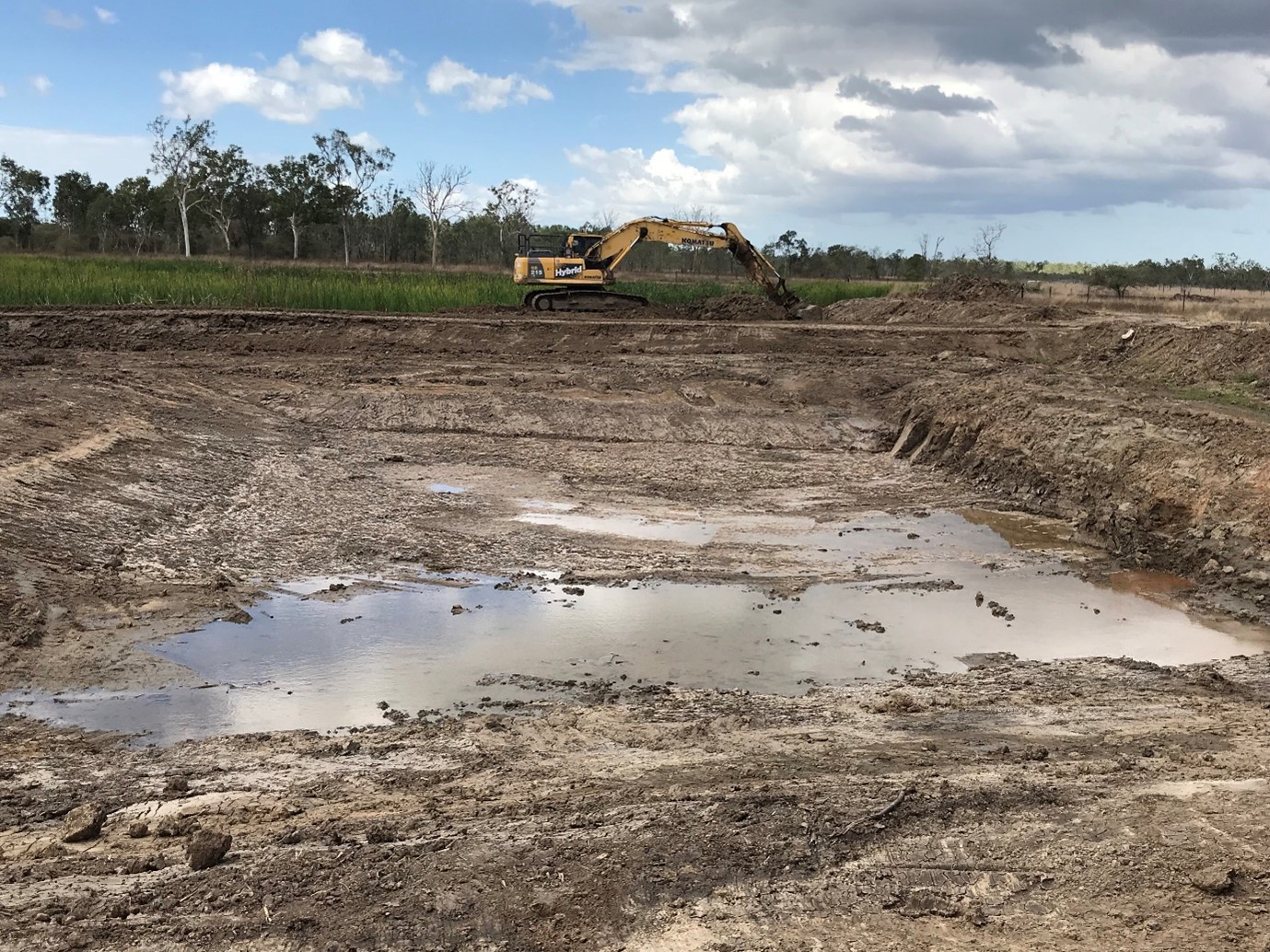|
|
Sediment basinsSediment basins — Construction and operationSelect from the tabs below ApprovalsApprovals may be required for the construction of a sediment basin. Contact your local government before any construction is undertaken to understand requirements. For example:
It is also recommended that local Traditional Owners are engaged to ensure no sites or items of cultural significance are disturbed during excavation. Engineering advice should be sought prior to construction to ensure the sediment basin is sized and sited appropriately, taking into account soil suitability, groundwater and local hydrology. The stability and safety of the sediment basin should also be considered. ConstructionConstruction of a sediment basin involves a number of steps, including:
A vegetated sediment basin will require consideration of levels needed for plants to establish and thrive. If the sediment basin is to be vegetated, topsoil should be stripped, stockpiled, and respread in the basin.
Case study: Installing a sediment basin on a cane farm in the Burdekin.
EstablishmentA sediment basin can start trapping sediment as soon as it is built. The batters of a sediment basin should be stabilised with grasses or groundcovers to prevent erosion. A vegetated sediment basin will require plants (mainly reeds and sedges) to be established throughout the sediment basin. Refer to establishment of treatment wetlands for more information. OperationSediment basins do not require active operating other than maintenance as described below. Monitoring and maintenanceSediment basins should be inspected for damage and to assess sediment accumulation every six months, or after every major rain event. Typical maintenance of sediment basins will involve:
Lifespan/replacementWith regular maintenance to remove accumulated sediment, sediment basins should last indefinitely. DisclaimerIn addition to the standard disclaimer located at the bottom of the page, please note the content presented is based on published knowledge of treatment systems. Many of the treatment systems described have not been trialled in different regions or land uses in Queensland. The information will be updated as new trials are conducted and monitored. If you have any additional information on treatment systems or suggestions for additional technologies please contact us using the feedback link at the bottom of this page. References
Last updated: 5 November 2022 This page should be cited as: Department of Environment, Science and Innovation, Queensland (2022) Sediment basins — Construction and operation, WetlandInfo website, accessed 8 May 2025. Available at: https://wetlandinfo.des.qld.gov.au/wetlands/management/treatment-systems/for-agriculture/treatment-sys-nav-page/sediment-basins/construction-operation.html |

 — Department of the Environment, Tourism, Science and Innovation
— Department of the Environment, Tourism, Science and Innovation



